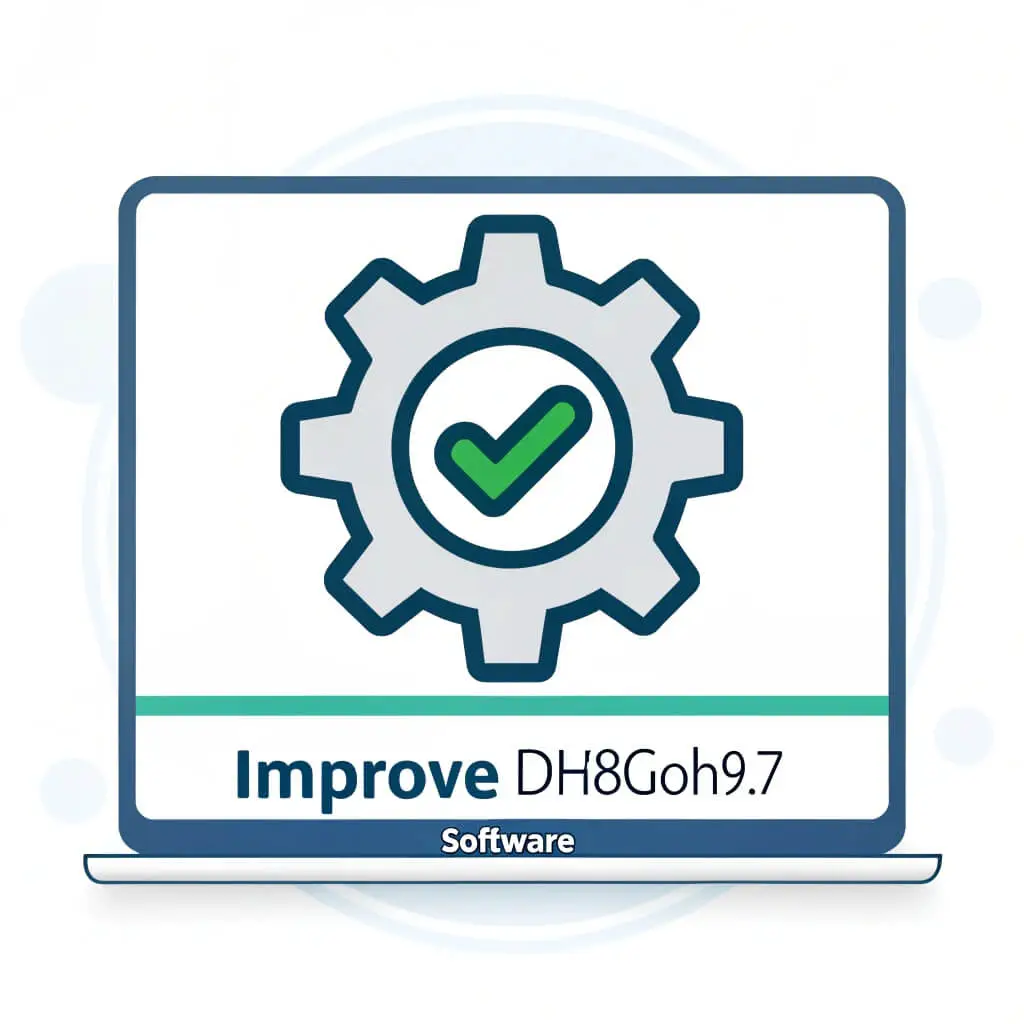Understanding DH58GOH9.7: Its Role and Importance
improve dh58goh9.7 is a crucial component in various technological and industrial applications, functioning as a pivotal element that supports optimization and efficiency. Its primary role involves ensuring that processes align seamlessly with operational goals, significantly enhancing overall performance metrics. The importance of DH58GOH9.7 lies in its ability to facilitate real-time data processing, which is critical in today’s fast-paced environments. Organizations that harness this technology report improved accuracy in their operations, contributing to better decision-making and resource allocation.
An essential characteristic of DH58GOH9.7 is its versatile adaptability across multiple domains. It plays a pivotal role in sectors such as manufacturing, telecommunications, and data analytics, amongst others. Each application leverages the core capabilities of DH58GOH9.7 to drive performance enhancements, optimize workflows, and reduce latency in processing tasks. This multifaceted utility makes it a valuable asset for organizations looking to maintain a competitive edge in their respective fields.
However, despite its advantages, DH58GOH9.7 faces several contemporary challenges that can hinder its optimal operation. Common issues include integration difficulties with legacy systems, the need for continual software updates, and data security concerns. These challenges necessitate ongoing evaluations and updates to the system to ensure that performance levels are maintained. As organizations increasingly rely on DH58GOH9.7, addressing these challenges becomes vital to sustaining and improving its contributions to performance metrics.
This foundational understanding of DH58GOH9.7 sets the stage for exploring strategies to enhance its performance further. By recognizing its significance and the obstacles it faces, organizations can strategically implement measures designed to improve DH58GOH9.7 in various applications effectively.
Identifying Key Areas for Improvement in DH58GOH9.7
Understanding the performance metrics of DH58GOH9.7 is essential for identifying critical areas that require enhancement. By closely examining performance data, one can uncover specific weaknesses that may hinder overall efficiency and effectiveness. Using quantitative measures such as response time, accuracy rate, and user satisfaction scores provides a solid groundwork for identifying where improvements can be made.
Additionally, gathering user feedback is crucial. Conducting surveys and interviews with end-users helps to uncover their pain points and areas where they encounter difficulties while interacting with DH58GOH9.7. This qualitative data can often reveal insights that performance metrics alone cannot capture. By synthesizing both quantitative and qualitative data, one can establish a comprehensive understanding of the system’s current status and user experience.
Benchmarking against industry standards and competitors provides another layer of analysis that can highlight potential areas for growth. By comparing DH58GOH9.7 to similar systems, we can highlight gaps or discrepancies that warrant attention. Understanding where the system stands in relation to its peers allows for strategic prioritization of improvement efforts.
Moreover, employing analytical tools for continuous monitoring can enhance ongoing performance evaluations. These tools can track relevant metrics in real-time, enabling teams to act swiftly when issues arise and to assess the effectiveness of implemented strategies. Regular analysis not only ensures that existing weaknesses are addressed but also highlights emerging challenges or opportunities in an ever-evolving landscape.
By systematically identifying these critical areas of improvement, organizations can create a targeted roadmap for enhancing the efficacy of DH58GOH9.7. This approach fosters a culture of continuous improvement, ultimately leading to a more effective and user-friendly system.
Implementing Strategies to Improve DH58GOH9.7

To effectively improve DH58GOH9.7 performance, organizations should adopt a multifaceted approach involving technical adjustments, process optimizations, and comprehensive user training initiatives. A systematic assessment of the current operational framework is essential to identify specific areas requiring enhancement. This initial evaluation will serve as a foundation for formulating targeted strategies aimed at increasing efficiency and productivity.
One critical technical adjustment is optimizing the software configuration of DH58GOH9.7. Reviewing system settings allows administrators to leverage advanced features that may not be fully utilized. Enhancing compatibility with other systems and software solutions can also minimize downtime and improve overall performance. Regularly updating the software to the latest version will ensure access to cutting-edge functionalities and security improvements, further bolstering operational efficacy.
In addition to software modifications, streamlining internal processes is vital. Implementing standardized workflows can significantly decrease redundancies and enhance resource utilization. It is advisable to involve team members in this process, as their hands-on experience can shed light on existing bottlenecks and areas for enhancement. Furthermore, introducing automated workflows can facilitate quicker data processing, allowing the organization to respond more swiftly to market demands.
User training cannot be overlooked when seeking to improve DH58GOH9.7 performance. Comprehensive training sessions should be conducted to ensure all users understand the system’s capabilities and best practices for usage. Engaging training programs will equip users with necessary skills, helping to mitigate errors and enhancing overall productivity. Regular refresher courses and knowledge-sharing sessions can also help maintain a high proficiency level within the team.
By executing these strategies, organizations can unlock the full potential of DH58GOH9.7, leading to measurable improvements in performance and productivity. Each component discussed plays a pivotal role in establishing a robust operational framework that favors continuous advancement.
Measuring Success: Evaluating the Impact of Improvements on DH58GOH9.7
Assessing the effectiveness of implemented strategies to improve DH58GOH9.7 is essential for ensuring that the desired outcomes are achieved. To do this effectively, organizations should establish key performance indicators (KPIs) that align with both the overall goals of the initiative and specific attributes associated with DH58GOH9.7 performance. These KPIs can serve as quantifiable measures that help track progress over time and facilitate informed decision-making.
KPIs may include metrics such as throughput, error rates, response times, and customer satisfaction scores, among others. By selecting appropriate indicators, stakeholders can gain insight into how the recent improvements have affected DH58GOH9.7. It’s crucial that these metrics are specific, measurable, attainable, relevant, and time-bound (SMART) to ensure they accurately reflect performance updates.
In conjunction with KPIs, feedback mechanisms play an integral role in evaluating the success of improvements. Regular surveys, performance reviews, and analysis of user interactions can provide qualitative assessments that complement quantitative data. These insights allow organizations to understand the user experience and identify areas requiring further attention or adjustment. For instance, if feedback suggests that certain aspects of DH58GOH9.7 still do not meet user expectations, stakeholders can pivot their strategies accordingly.
Continuous evaluation is critical for sustained improvement. Organizations must remain agile and responsive to data trends, ensuring they are equipped to adapt initiatives based on evolving insights related to improve dh58goh9.7 performance. Regularly revisiting both KPIs and feedback can help maintain momentum and drive ongoing enhancements. Developing a culture of accountability within teams will further support the effective measurement of success, ultimately leading to ongoing advancements in DH58GOH9.7 functionalities.


